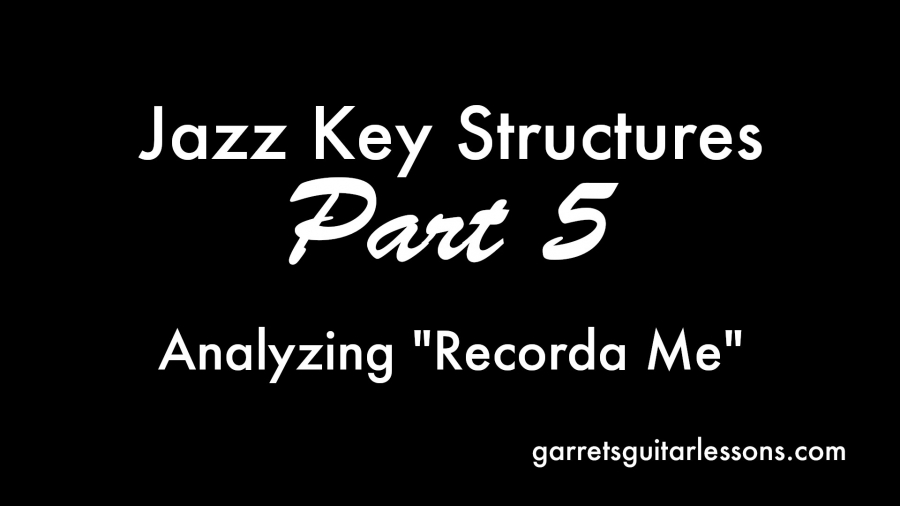So in this post I’ll be talking about talking about how to start anaylzing the song “Recorda-Me” as an example of how to think about soloing over the song.
*This is built upon my previous posts: Part 1, Part 2, Part 3, Part 4
The song’s chord progression is:
Am – Am – Am – Am
Cm – Cm – Cm – Cm
Bbmaj7 – Bbm7.Eb7 – Abmaj7 – Abm7.Db7
Gbmaj7 – Gm.C7 – Fmaj7 – E7#9
The song begins with four bars of Am. This is a standalone chord so this is just a big long A Dorian jam.
The next four measures are four bars of Cm. This is another standalone chord so this is just a big long C Dorian Jam.
The next chord is a Bbmaj7, since it’s not following a m7-7-maj7 (Major ii-V-I) pattern we could easily see this as just a scale change to Bb Ionian. Let’s take a closer look at the two scales though:
C Dorian: C-D-Eb-F-G-A-Bb-C
Bb Ionian: Bb-C-D-Eb-F-G-A-Bb
Yup, they’re the same group of notes with different starting points. It’s essentially a ii-I skipping the V, so it’s less obvious to see but nonetheless a similar pattern. Now in all fairness, I’ve seen charts that have an F7 in the last two beats of the fourth measure of the long Cm section (Cm – Cm – Cm – Cm.F7), but not always.
So you can just keep thinking C Dorian when that Bbmaj7 comes around just be sure to be aware of the Bbmaj7’s chord tones (As discussed in Post 4)
Next comes a series of ii-V-I’s: Bbm7.Eb7 – Abmaj7 is a ii-V-I in Ab so I tend to think of Bb Dorian throughout. Next is Abm7.Db7 – Gbmaj7 which is a ii-V-I in Gb so I tend to think Ab Dorian throughout. Then we have Gm.C7 – Fmaj7 which I tend to think of as G Dorian throughout.
The last E7#9 is an odd one though, seems to come out of nowhere unless we think of it as a dominant of the first chord Am. Now to put this in context, let’s think of where it’s going: Am. This should be thought of as a V as apart of a Minor ii-V-i… why a minor ii-V-i? Because where it’s leading is to a Minor Chord! So i tend to think of that as an A Harmonic Minor Scale Shape.
So after four blogs I finally analyze a song. There’s not a way to practice this wrong as long as you keep the few things I’ve previously went through in mind. Depending on where you’re at there are a few things that help get you through it:
Change Positions
Yes, use the same Dorian Pattern and move it around to different roots. If this style of playing is brand new this is a good way to get a handle on switching keys. I tend to suggest either the E or A shape scale through as we’re already familiar with where the root notes are.

Use Closest Shapes Possible
This is harder but the more preferred way. Start at an A Dorian Shape (say the E Shape), where’s the closest C Dorian Shape? A C Dorian as a G Shape. Bb would be a Ealt Shape, Ab Dorian would be a D Shape, G Dorian would also be a D Shape, then back to a E shape for the A Harmonic Minor.

So there we go, remember to keep some chord tones in mind and enjoy!

